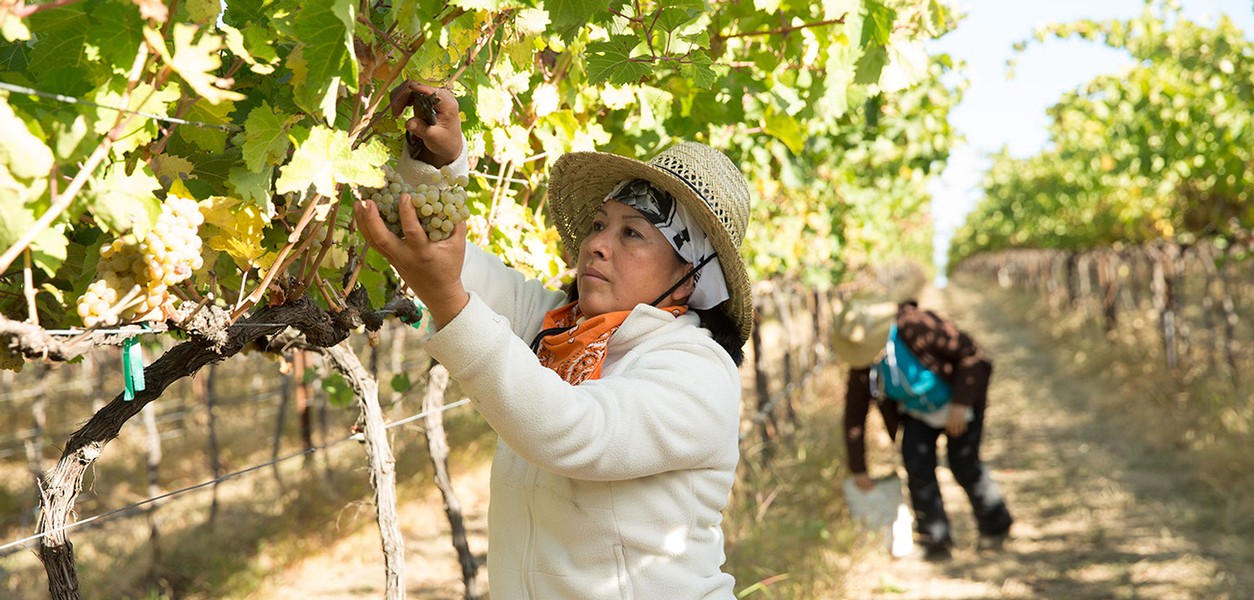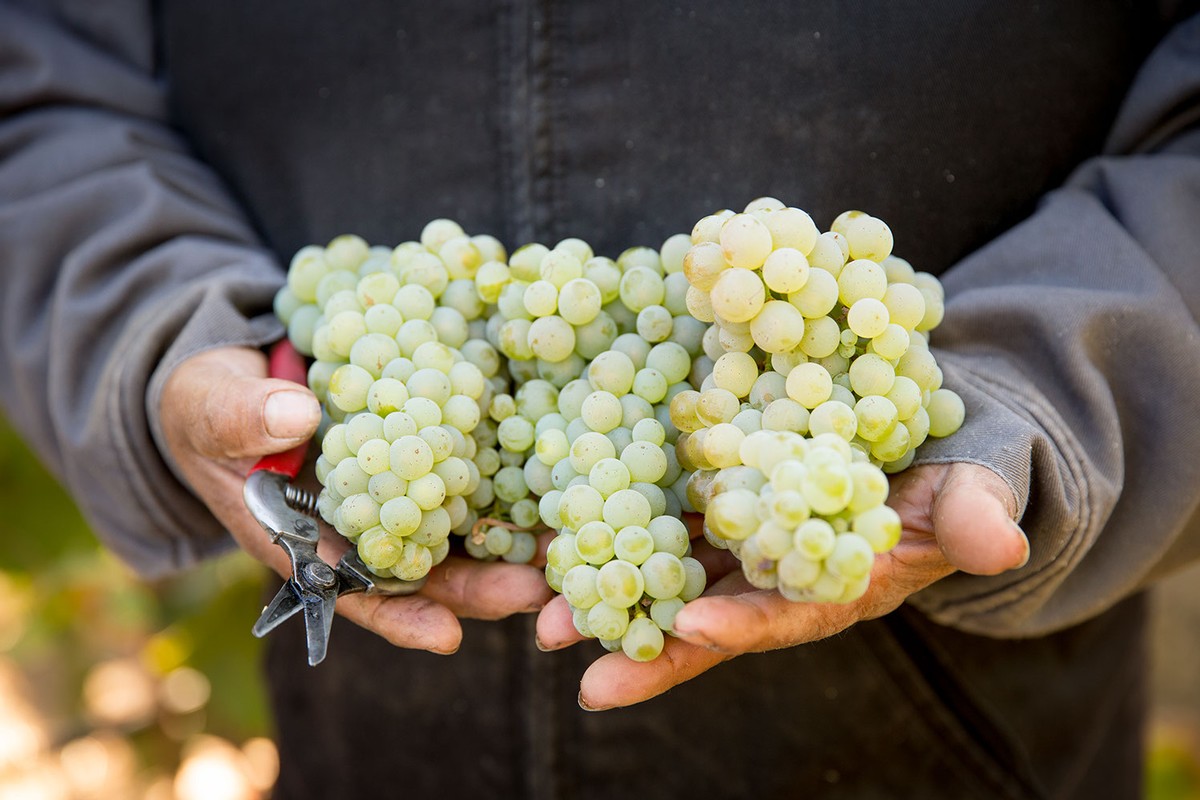How to decide when it is time to harvest after a warm vintage
Hand harvesting Riesling from Wallula Vineyard. Picking at the right time is one of the most important winemaking decisions. The final quality of a wine can often be directly linked to the picking decision.

For example an early picked Riesling will have flavors of green apple with low potential alcohol and high acidity, which is often perfect for a sparkling wine that has to be refermented to acquire its carbonation.
On the other end of the spectrum, very late picks can have tropical fruit flavors, very high sugar and sometime can be infected by Botrytis aka: Noble Rot. Picking later in the season is more appropriate for sweeter styles or complex bold dry styles such as an Alsatian Vendange Tardive wine.
Every winemaker needs to precisely time his or her picking decisions with the end product in mind. All would be beautiful if every growing season would be the same; that would allow producers to quickly learn the cause and effect of their picking decision.
But alas, Mother Nature chooses to randomize the weather every year. I guess I find solace in the fact that changing ripening conditions force winemakers to use their best judgment and reflect on their craftmanship.
There are countless vintages where producers can be sorted between the ones that picked before or after the rain, or the frost, or the heat spell. We can only hope to make the right picking call often and amass a high batting average.
2014 had all the hallmarks of a hot vintage: early bud break, early bloom (3 weeks ahead of average), early veraison, hot summer, early harvest (earliest of the last 17 harvests I have been part of in Washington).
This year is a vintage similar to 2014, 2003 and 1998. The fruit we are receiving is following the pattern of a warm vintage as well with lowish acidity (especially low malic acid), high sugar levels, low flavor development and high levels of phenolic content.
I have also seen some berry dehydration that seems correlated with lignified stems which I suspect comes from a dysfunctional xylem and hot conditions. However, the dehydration is pushing sugar even higher and is concentrating acidity reversing some of the lower acidity that we should see in a hot vintage.
All this makes the picking decision very tricky: should one pick early when the acidity is good, the potential alcohol is normal but the flavors are low? Should one wait and pick when the flavors are developed but then the acidity is gone and the sugar is sky high?
Or should one wait until raisining occurs with concentrated flavors, high acid but insanely high sugar? No matter the decision, the juice will have to be corrected and I hate to correct juices.
So here at Pacific Rim, we have opted to broaden the picking window to bring all those different ripeness levels in house and use blending to rebalance our lots.
An early pick with high acid and low flavors blended with a late pick with lots of flavors but no acid... you get the idea. This is used quite often, even at small estates, and is called fractional harvesting.
One can do this at the parcel level doing several passes or one can do it on a large scale with different parcels. I think this is brilliant winemaking because it minimizes corrections and tries to work with the vintage.
It also allows for smoother logistics at the winery; if we were to wait until the first lot is perfectly ripe we would not be able to keep up with all the grapes ripening at the same time and invariably, the later grape loads would be way over ripe.
So here we are at 30% of our harvest done with a large amount of what most wineries would consider a sparkling base (high acid, low sugar, low flavor) and starting into our second pick of Riesling which would usually fit the bill for Sweet Riesling.
For us hot vintage equals fractional picking and a wide range of lots for blending later.
